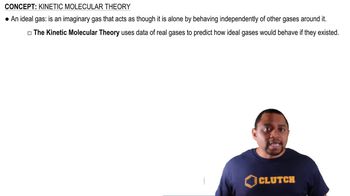Here are the essential concepts you must grasp in order to answer the question correctly.
Kinetic Molecular Theory
The Kinetic Molecular Theory explains the behavior of particles in different states of matter. It posits that as temperature increases, the kinetic energy of particles also increases, causing them to move more vigorously. This increased motion leads to the breaking of intermolecular forces, allowing solids to melt into liquids and liquids to vaporize into gases.
Recommended video:
Phase Changes
Phase changes refer to the transitions between solid, liquid, and gas states of matter. These changes occur at specific temperatures known as melting and boiling points. When a solid is heated, it absorbs energy, which facilitates the transition to a liquid state, and further heating allows the liquid to transition to a gaseous state.
Recommended video:
Intermolecular Forces
Intermolecular forces are the attractive forces between molecules that influence the physical properties of substances. In solids, these forces are strong, keeping particles closely packed. As temperature rises, these forces weaken, enabling the solid to melt into a liquid and eventually allowing the liquid to evaporate into a gas.
Recommended video:
Intermolecular vs Intramolecular Forces




